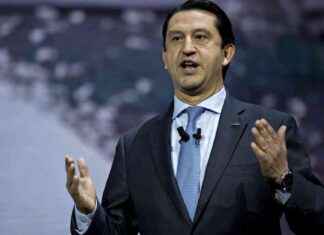Diplomacy in the normal sense of reciprocity and compromise is not what one would associate with Donald Trump or Vladimir Putin. We should be concerned. Both are more inclined to confrontation than conciliation. Trump can be constrained by the Constitution; there are no checks on Putin’s power. Trump needs to use uncharacteristic caution in his relations with Putin.
Putin represents the deep Russian historical conviction that national security is contingent on an all-powerful, paternalistic autocrat, a deference to orthodoxy and an opposition to the modern West. Putin, through propaganda, terror and subterfuge – refined as the head of the Federal Security Services (formerly KGB) – rules like a czar. His popularity in Russia is due to his reactionary, xenophobic nationalism and cult of personality. He is nostalgically reassuring because for Russians he is the ruler who protects them from a decadent and belligerent West.
The debate between Russia embracing the West or following its unique Byzantine and Slavic traditions dates from the 18th century. In the late 20th century, Russian attempted democracy and free markets, but the former failed due to obstruction from former Communist Party officials and the latter mutated into an unbridled cowboy capitalism, a variation of the corrupt late Soviet period. Putin’s rise to power was possible because he coddled corrupt oligarchs who cannibalized the privatized economy in its infancy after the dissolution of the Soviet Union. Russians associate these failed experiments in Westernization with the “Time of Troubles,” the chaotic early 17th century between the death of Ivan the Terrible and the ascent of the Romanov dynasty.
Putin consolidated his power by assassinating journalists, muzzling media, outlawing opposition political parties and eviscerating dissent. Consider the cases of Pussy Riot and Alexander Litvinenko, who was fed radioactive tea and slowly incinerated from the inside out. Litvinenko accused Putin of ordering the assassination of oligarch Boris Berezovsky, who was in exile in London. Berezovsky had evidence that Putin allegedly authorized the bombing of several residential buildings. Putin blamed this on Chechen terrorists, which provided him with a pretext to ascend to the presidency, to impose de facto martial law and to resume the war on Chechnya. Berezovsky also challenged Czar Putin’s political monopoly.
As a child, Putin would corner rats and attempt to outmaneuver them into submission. This is perhaps a metaphor for Putin’s approach to foreign policy. As NATO expanded, Putin struck back with the occupation of Ukraine. The specter of the West using Eastern Europe as a corridor for conquest resonates with Russians. Further NATO expansion is deemed provocative and confirms Russian fears, which Putin exploits.
As with his childhood rats, Putin will reconquer portions of Russia’s former imperial land to insulate Russians from perceived Western aggression. By externalizing the threats to Russia, Putin can distract citizens from chronic domestic crises: increasing income inequality and rising poverty, a declining birthrate attributable to epidemic levels of alcoholism, and persistent corruption.
For Putin, the Ukraine incursion was a test of U.S. resolve to its NATO commitments. The conundrum for the U.S. was that in responding militarily it risked war with Russia. With proxy wars is Afghanistan and Syria, this is a new Cold War.
U.S. retreat into an isolationist posture is an ominous prospect. Retracting from NATO diminishes the credibility of all current and future global treaties on which mutual military support are predicated. It is imperative that U.S. continue sanctions even if Putin remains impervious.
Fu Ying, former vice foreign minister of China, acknowledged in early 2016 that China and Russia were improving relations after decades of animosity. Since the election, is it now more in Russia’s and China’s national interests to strengthen their relations? Is Putin orchestrating a rapprochement with China, playing the “China card” and checkmating Trump’s emerging two-China policy and protectionist rhetoric? How would such an alliance impact U.S. interests?
For all the traits Putin and Trump appear to have in common – a vindictive hubris, a hegemonic nationalism, an inclination for self-aggrandizement – the Russian is not the apprentice in this game. Putin’s alleged interference in the election and creation of dossiers are reminiscent of Josef Stalin and, yes, Richard Nixon, former CIA director Richard Helms and former FBI director J. Edgar Hoover.
Trump, presumably acquainted with Machiavellian methods, should not be deluded by Putin’s expressions of admiration. The real Putin, the “man without a face,” is enclosed in a veneer of multiple guises, like a Russian nesting doll. To paraphrase Winston Churchill, Putin, like Russia, “… is a riddle wrapped in a mystery inside an enigma.”
John B. Hagney, M.A. Russian History, has published research on the late Soviet period and is a U.S. Presidential Scholar Distinguished Teacher at Lewis & Clark High School.
Our editors found this article on this site using Google and regenerated it for our readers.





